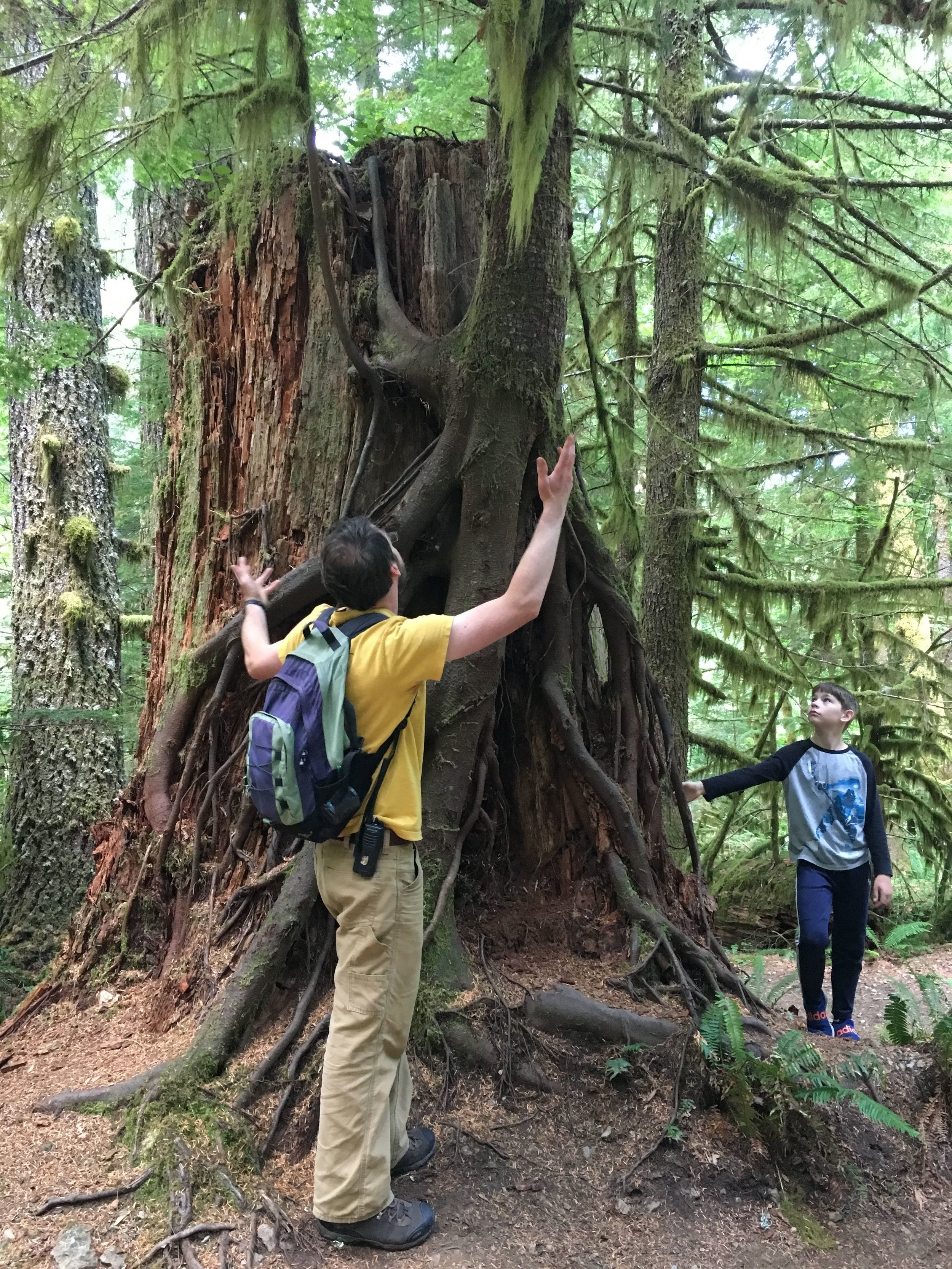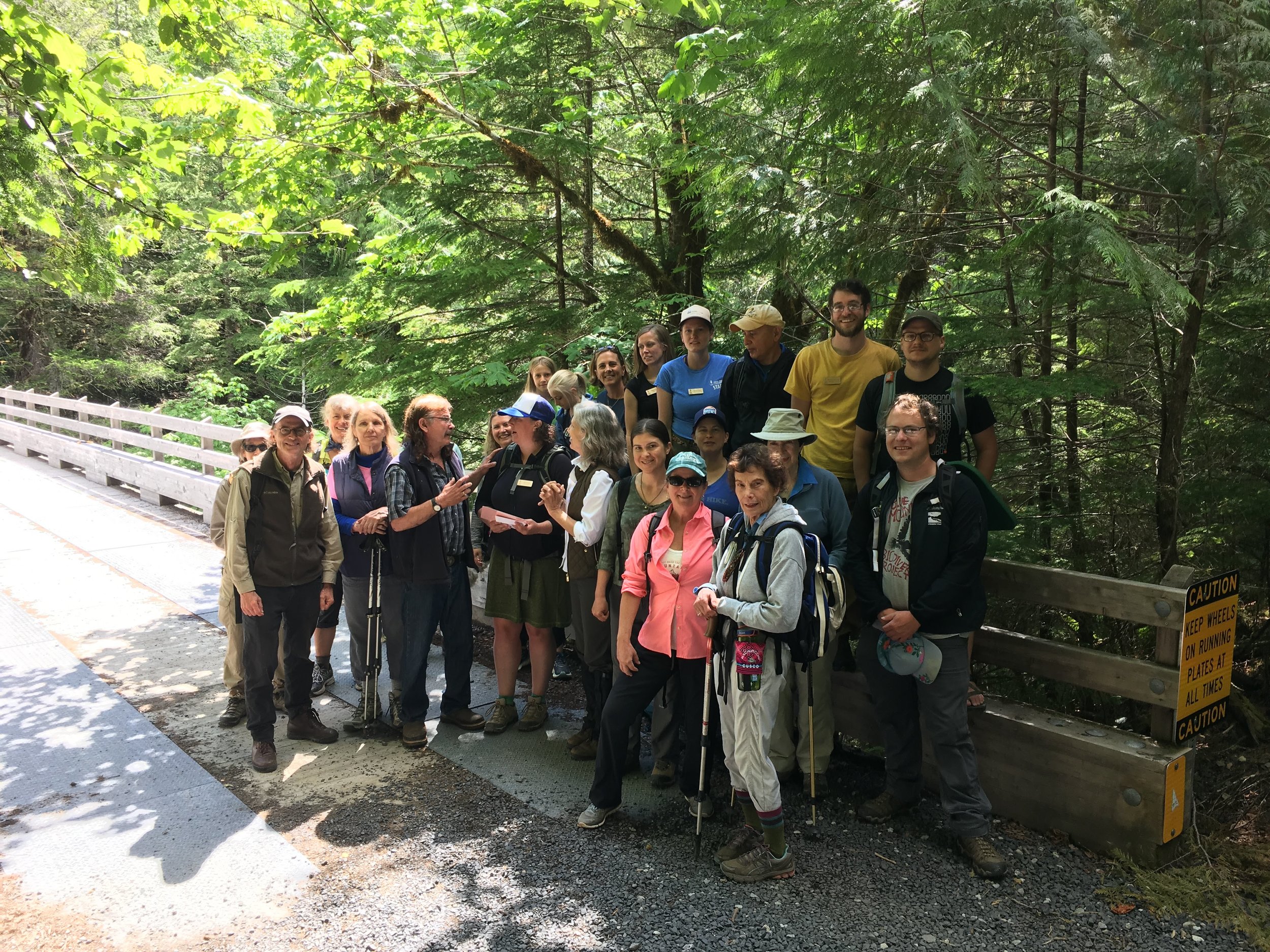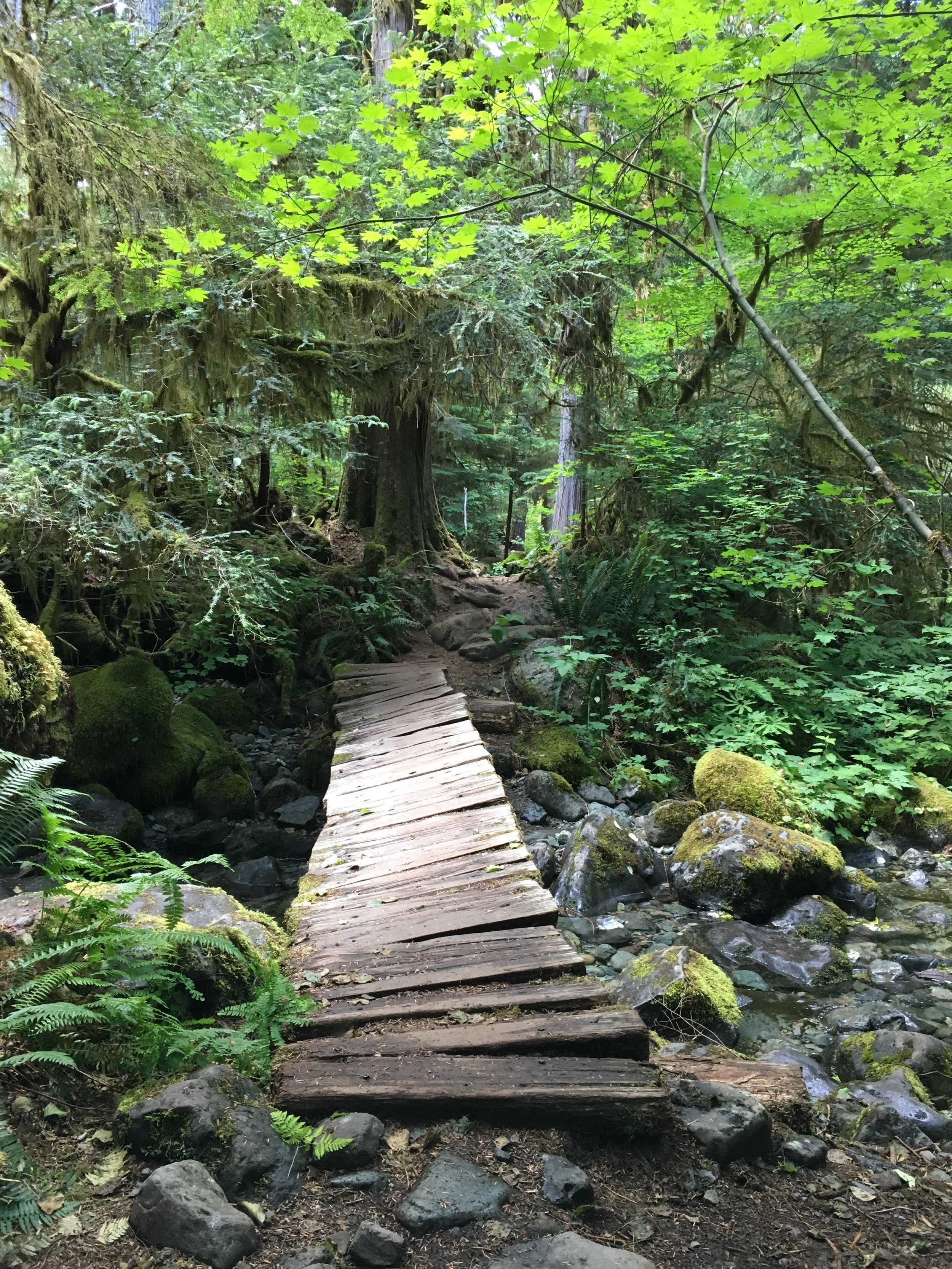
Opal Creek Wilderness - Willamette National Forest
December 2023 Alert: Forest Service Road 2209 to Opal Creek Trailhead is currently closed for public safety following the Beachie Creek and Lionshead wildfires. Many roads and trails within the Wilderness Area are temporarily closed. Please check the Willamette National Forest website for alerts prior to planning your visit.
The Opal Creek Wilderness and the neighboring Bull of the Woods Wilderness comprise the largest contiguous area of low-elevation old growth left in Oregon. Opal Creek’s ancient rainforest is a remnant of the conifer forests that once stretched from the Pacific coast to the crest of the Cascades, and from southeast Alaska to the northwest corner of California. This region, also known as Cascadia, contains trees and other organisms uniquely adapted to the heavy rainfall—70-100 inches per year–including the most diverse moss species of anywhere in the world. The oldest tree at Opal Creek is the Douglas fir and one of the largest known is “Guts Gibbs,” measured at over 270 feet high and 1,000 years old! Growing in its shade are the Western hemlock and the Western red cedar. As a “late successional forest” many of the hemlocks and cedars are beginning to overtake the Douglas firs in height and abundance. Below these giants you will find the Pacific yew. The Pacific yew is an extremely slow-growing shade-tolerant tree; a tree that may appear to be 50 years old could be well over 200! Many plants thrive in this moist temperate rainforest, with 9 months of precipitation and a short 3-month summer drought. The understory is rich with many species of shrubs, ferns, wildflowers, and berries. The forest floor is blanketed with bryophytes like mosses, liverworts, and hornworts, making a lush green carpet that cradles the giant old trees. Bryophytes make up a large percentage of old-growth canopy by growing on tree branches, where they are known as epiphytes (plants that take in nutrients from the air, rain, and debris around them rather than the soil). When it rains, canopy epiphytes absorb and hold up to 30% of the precipitation in the atmosphere. The moisture is released later as occult precipitation. After a rain, you may notice fog lifting from the mountain ridges; this is occult precipitation in action!






View All Network Forests in the State of Oregon
View All Network Forests in the U.S.
View All Forest Designations
